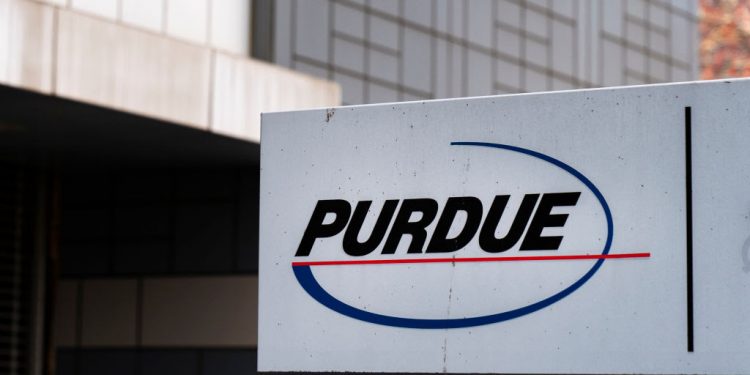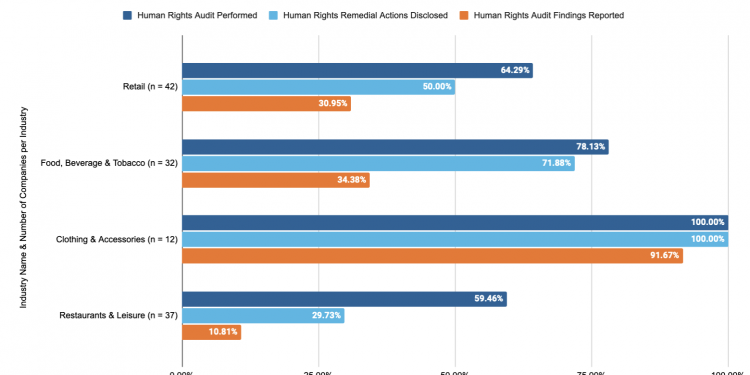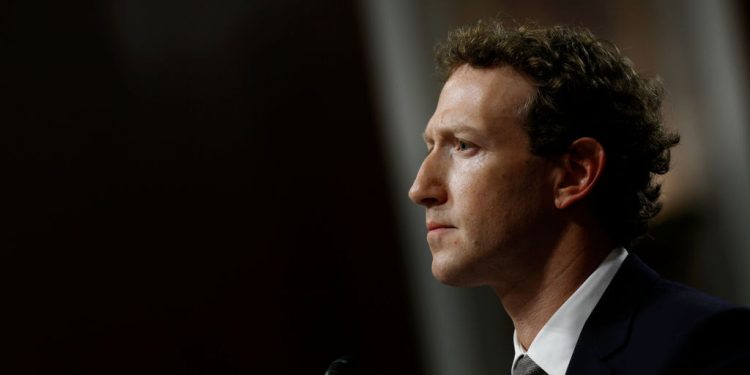The JUST Report: The Top U.S. Companies With Strong Veterans Programs

(Getty Images/SDI Productions)
How can corporate America better serve those who’ve served our country? It’s an important question to highlight on Veterans Day. In fact, it’s one that helps guide our work here at JUST Capital year round.
Based on our research and discussions with experts, there are two major ways to start: First, invest in veteran hiring programs or initiatives meant to support those who served with career advancement in the private sector; And second, create veteran supplier programs, or commitments to working with supplier partners run by veterans.
There’s certainly room for improvement. Our data shows that just under 1 in 3 of all Russell 1000 companies disclose having veteran hiring programs. And only 4% of Russell 1000 companies disclosed having veteran supplier spending programs.
So whose example can executives follow? According to our data, 13 companies in particular rise to the top. AT&T is one. In 2022, 9% of the company’s new hires were military veterans. AT&T runs a Military Fellowship Program, which helps connect active duty members transition into the workforce, a robust Veterans Employee Resource Group, and a Veteran Supplier Diversity Program. Currently, the telecoms provider has a goal of ensuring that 21.5% of total procurement expenditures are with minority-, woman-, and service-disabled veteran-owned business enterprises.
Other companies on the list have launched commendable programs too in recent years. Take HP, for example. In 2021, it issued its inaugural sustainability bond by partnering with banks owned by underrepresented communities, including veterans, which received approximately 5% of total underwriting fees. Lockheed Martin worked with 800 veteran-owned small businesses in 2021, per the company’s most recently listed data, and awarded $623.3 million in subcontracts to veteran-owned businesses. And in 2022, 30% of the company’s hires were military veterans.
That’s leadership we can all salute.
Be well,
Martin
QUOTE OF THE WEEK
“It would be naive to assume that AI won’t dramatically alter certain roles, and even eliminate others as we continue to realize the potential of AI to augment and automate a wide range of processes. But I’m a big believer in technology in general to boost the abilities of individuals, and I think ultimately AI will be seen to enhance and expand the way so many of us approach our day-to-day work. I see so many use cases for this in the HR space: New managers might use generative AI to compile and synthesize feedback to write a more powerful case for promotion for one of their reports, or hiring managers might use it to punch up job postings and leave more time for the most important, human part of their jobs – interviewing great candidates.”
- Cara Brennan Allamano, Chief People Officer at Lattice to JUST Capital on how leaders can begin to approach artificial intelligence.
JUST AI
A new report from the Social Science Research Network proposes a Model Risk Management framework for assessing AI bias in HR functions, arguing that the framework has been successfully deployed in financial industry practices and could help the HR industry in similar ways in the absence of clear AI regulation.
Fortune reports that LinkedIn job postings that mention AI are seeing a 17% increase in applications, with job seekers choosing a “if you can’t beat them, join them” mentality in the face of potential job losses as AI reaches wider adoption.
A New York Magazine article explores the vast legal challenges big tech companies face over their use of AI, namely multiple lawsuits alleging copyright infringement and theft – topics much of existing law doesn’t clearly cover. The article suggests tech companies continue to defend AI’s potential to benefit humanity, while downplaying the legal risks.
MUST READS
Axios looks at the ways the Israel-Hamas war is spilling over into the workplace, causing major tensions between employees where there used to be none. The piece states: “Arab and Muslim workers are feeling like their pain isn’t being acknowledged, and they fear retaliation at work. Meanwhile, Jewish staffers are feeling concerns over anti-semitism.” Trying to stay above the fray won’t work, either. As the Wall Street Journal reports, companies that have tried to avoid responding have found themselves facing intense criticism from employees.
SAG-AFRTA, the actors’ union, reached a tentative deal for a new contract with studios on Wednesday. The deal, which union members have yet to vote on, includes increases in pay for streaming work, greater health care funding, and regulations on AI use. The New York Times has the story.
Workday has piloted an inventive new mobility program, allowing workers to take “gig work” in other areas of the company to gain experience and new skills. According to Fortune, internal hiring and promotions have skyrocketed since its implementation.
Axios reports that since 2020, significantly more employees across all wages have access to paid sick leave, though those earning the bottom 10% of wages still have a long way to go to catch up to everyone else.
Barron’s digs into new data that shows the implications of the “child care cliff” on working hours. Of full-time working Americans, 92,000 reported needing to work part-time for at least one week in October due to child care issues. That number was at 55,000 in September.
NPR reports that Starbucks will be increasing pay and benefits for the majority of their workers after a banner year. However, the company has stated that unionized workers will not be receiving all of these perks due to ongoing negotiations, increasing the tension between management and the brewing labor movement at some of its locations.
The New York Times reveals findings from a new UN-backed report that major fossil fuel-producing countries are together on track to produce double the amount of fossil fuels required to maintain global warming within 1.5 degrees Celsius, despite commitments to limit warming.
The Wall Street Journal writes that after several years of focusing on employee attrition and constant post-pandemic turnover, companies are facing a new problem: not enough people are leaving.
CHART OF THE WEEK
For Veterans Day, we updated our previous research on how companies who actively promote veteran hiring fare against those who don’t. The results? Despite the tumultuous year, companies that disclose a veteran hiring policy outperform those who don’t, with the gulf widening in the second half of the year.






